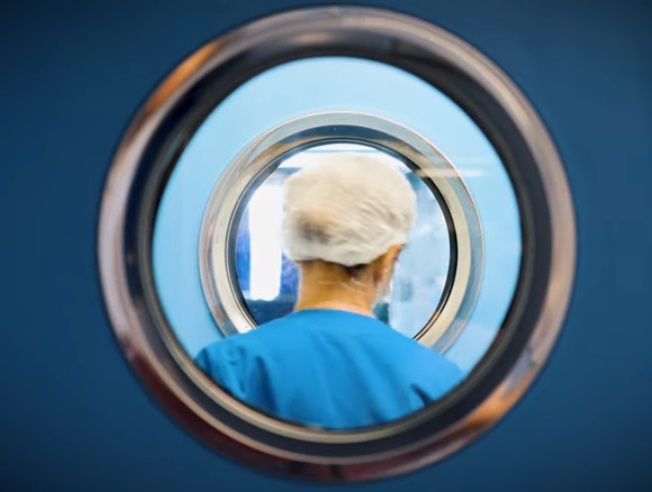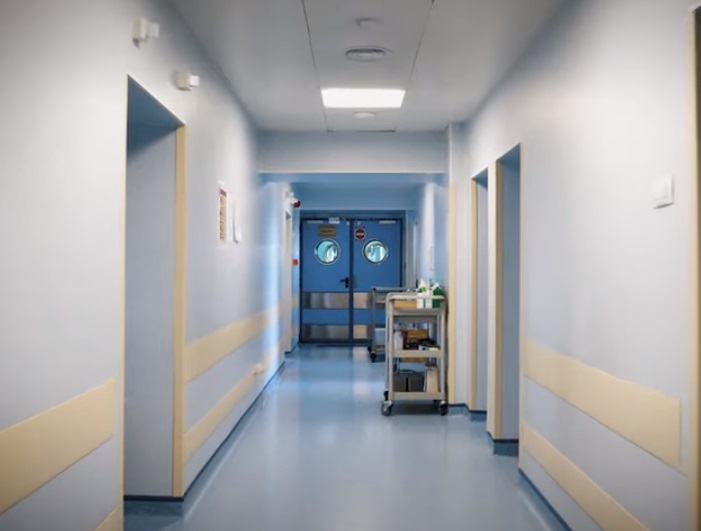
The dream of any oncologist and his patients is now also possible at the Fundeni Clinical Institute in Bucharest. Alina Tenase, a doctor who ten years ago developed a bone marrow transplant unit here according to Western standards, saving the lives of hundreds of patients diagnosed with blood cancer, fought to ensure that her patients now have access to new frontiers in cancer treatment – CAR cell therapy T.
“This is a great thing for medicine”
CAR-T cell therapy results in the patient’s own cells being modified in the laboratory so that they precisely attack cancer cells. The new therapy is considered revolutionary precisely because it targets patients who have not responded to all other lines of treatment and were basically doomed to palliative therapy, explains Dr. Alina Tenase in an interview with HotNews.ro.
Currently, in Romania, only patients with two types of blood cancer have access to this treatment – acute lymphoblastic leukemia in children and young adults and large B-cell lymphoma. However, 6 such therapies have been approved worldwide for several types of cancer.
The first 6 Romanian patients who underwent this therapy were treated in the department led by Professor Dr. Alina Tenase, at the Fundeni Clinical Institute in Bucharest.
“This is a different therapy, it is the dream of every oncologist to find a cell that, when injected into the blood, destroys the tumor. For us, as doctors, it is an extraordinary thing to always be able to offer a chance, to have a treatment option for a patient for whom there was no choice until now. This is a great thing for medicine,” says Dr. Alina Tenase in an interview with HotNews.ro.
Fundeni Clinical Institute is the first hospital in Romania whose patients have access to CAR-T cell therapy, which is considered revolutionary in the treatment of certain types of blood cancer.

How CAR-T therapy, a revolutionary new cancer treatment, works
CAR-T therapy is not only an innovative treatment method, but also one that changes the mechanism of action against cancer cells, explains Dr. Alina Tenase: “Because it uses the patient’s own cells, which they modify in the laboratory, that is, the patient’s own cells, modified in laboratory in such a way that it precisely attacks the disease cells. So we’re not talking about universal medicine, we’re talking about highly personalized medicine.”
This process takes several weeks, emphasizes Alina Tenase: “These drugs are not immediately available as soon as you prescribe them, precisely because we are talking about living cells. After we collect them and send them to these labs, they come back in about 4-6 weeks as medicine. Medicines in the literal sense of the word, but strictly personalized medicine for this patient.”
Currently, in Romania, only patients with two types of blood cancer have access to this treatment – acute lymphoblastic leukemia in children and young people and large B-cell lymphoma. However, 6 such therapies have been approved in the world for several types of cancer – all hematological diseases, says the doctor Alina Tenase: “With increasing experience, new products with other indications appear, and certainly in the coming years we will have such drugs for more patients.”
It is not a therapy that works immediately, but the patient is observed for weeks, initially every 4 hours, the doctor explains. For example, patients initially receive cytostatic treatment similar to pre-transplant treatment: “Our role as a transplant center is to very carefully monitor the administration and possible side effects of these drugs in the first 14 days because the side effects can be huge and so these patients are in specialized transplant centers. We put this infusion of cells on a catheter and monitor it carefully for 14 days, every 4 hours, because a wide range of complications are described. Among the most important, I would name the cytokine release syndrome. This is a complication that can lead the patient to intensive care. And according to research and experience, about 40% of patients, which is not a few, need intensive therapy and very careful monitoring from this point of view. Therefore, it should be evaluated very strictly. There is one other complication that I would like to mention and that is neurological toxicity. At the moment when the modified cells adhere to the tumor cell, it is destroyed and the entire contents of the tumor cell are released into the blood, these toxins released into the blood of the patient also reach the head and can cause high neurological toxicity. And we have certain protocols for observing the patient: for example, we ask him to write the same phrase several times a day, because it has been shown that the first change is a change in writing. Plus everything that means constant: temperature, blood pressure, pulse and all very strict monitoring. It is a treatment with severe side effects, and to be correct, it needs to be done in a specialist centre.”
And after discharge, “we check the patient’s blood for the presence of these CAR-T cells and evaluate the disease using imaging or special methods. But this is not a drug that works in a few days, this is a drug that we can get a partial response in 30 days and a full response in 60 days. Each patient responds differently due to this completely unprecedented specificity, thanks to which the active cells travel through the patient’s blood and attack the tumor where it is found. I hope that we have very good evaluations of these patients and are consistent with the results of the studies that led to this registration.”
How many patients can the Romanian state afford to treat and what is the solution for more patients to have access?
As this is a very expensive treatment – around several hundred thousand euros per patient – I asked Alina Tenase how many Romanian patients currently have access to treatment regulated by the National Health Insurance Agency.
Currently, Romania can treat 20 patients per year, but “there is no doubt that the number of patients will increase as our experience increases, as more patients will be referred for such therapy. And indeed, this is a very expensive therapy, because the production process of this drug is extremely complicated.”
In Romania, in the department of the Fundeni Institute under the leadership of Alina Tenase, 6 patients, both adults and children, have received this therapy so far. 6 patients are doing well, but they are still being examined.
This new therapy works in 80% of patients with acute leukemia and 60% of patients with large B-cell lymphoma, says Dr. Alina Tenase: “But there are very high percentages for the category of patients for whom it is prescribed, because these are patients who have we have exhausted other therapeutic lines and many of them have been for palliative care. For this category, you have no other treatment options, and to have these success rates is a great thing for medicine.”

Since the procedure is very expensive and takes a long time – doctors are looking for a free place on the platform of all the centers that administer CAR-T cells in Europe, they must collect and send to the laboratory viable controlled cells that can be turned into quality medicines – Alina Tenase would like for Romania to make the construction of such a laboratory a national project:
“I think that for very wide patient access to such therapy, it would be extraordinary to have a government project to create these types of drugs in a specialized laboratory in Romania, because this therapy will undoubtedly develop and include many more hematological diseases and maybe all the studies that are going on will lead to registration of these drugs in other tumors and then we will have a very large number of patients who will need this therapy and build a laboratory where we can make this modification and produce this drug in clinical trials for Romanian patients. I believe that it would be an extraordinary thing to increase the availability of such treatment methods,” says doctor Alina Tenase.
The first CAR-T therapy approved in 2017: “It was a revolution in international hematology”
We asked Alina Tenase how much time passed between the moment the first CAR-T therapy was approved and the moment it arrived at the Fundeni Institute: the first drug was approved by the FDA. ) in 2017 and “became a revolution in international hematology. It was approved very quickly after the publication of a study that showed extraordinary results. In 2018, the same drug was approved in Europe, and in the meantime, probably all scientific forums discussed these results. It took 3 years of effort and teamwork to get this therapy here. It was not easy. For example, we had to export cells with the approval of the National Transplantation Agency and import drugs. This is a different scheme and all these steps should have been taken in accordance with Romanian law. We had to conduct trainings and each team had interdisciplinary cooperation. It cannot be approved if you do not have a neurologist, an intensive care physician in your team and you have access to intensive care within 5 minutes. All these steps, from the pharmacist to the intensive care unit and the neurologist, to the transplant department, we had to go through all these stages of preparation and quality control of the process.”
Alina Tenase considers this therapy to be something extraordinary. Especially since it means a chance for patients for whom until now there was no treatment option: “It’s an extraordinary thing, I think we should fight for every chance, and when you have a drug that only you have heard and seen, clinical trials are a great achievement for a doctor. And I think our patients were also extremely brave. We started this program with the first patients, and I think they had a lot of courage to be the first to enter this program and put their lives in our hands. I would say ‘thank you’ for that, we’ve been trying to implement these treatments for a number of years and so far we’ve succeeded.”
He says that the Fundeni Institute got here thanks to teamwork, and now he hopes that his hospital will be an innovator and that these treatments will be available in other centers in Romania to gain access to them as soon as possible. patients: “It was a team effort in everything, which means the medical team, the administrative team, the patients, the press. Because the subject was hotly debated in the press, everyone said, “Wow, this is a different kind of therapy, and every oncologist’s dream is to find a cell that, when it enters the bloodstream, destroys the tumor. It is a great pleasure that you were able to give it a chance, and maybe after the Fundeni Clinical Institute, this program will expand to other centers, and then more and more patients will have such a chance.”
Source: Hot News RO
Robert is an experienced journalist who has been covering the automobile industry for over a decade. He has a deep understanding of the latest technologies and trends in the industry and is known for his thorough and in-depth reporting.